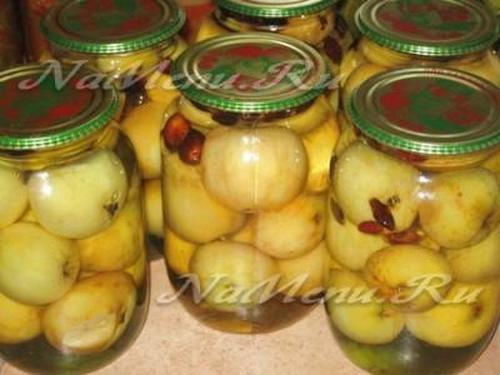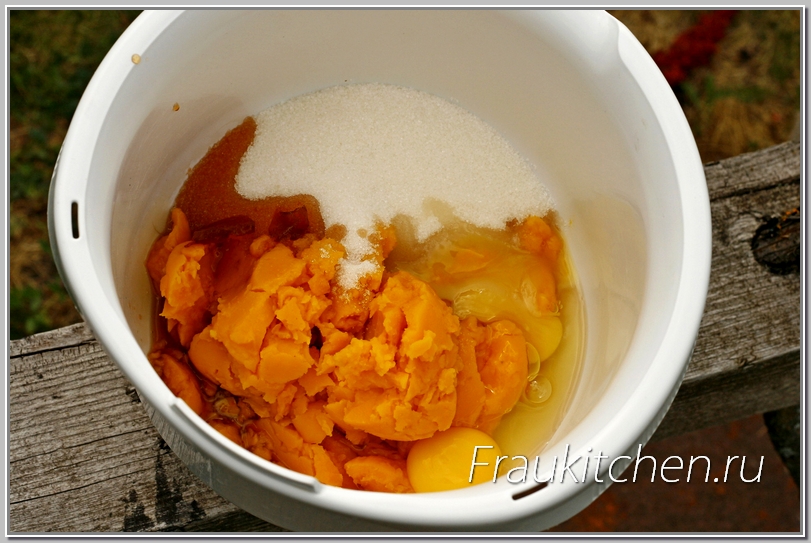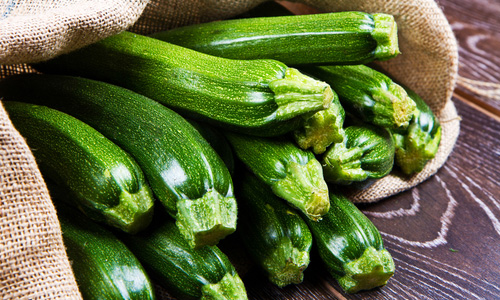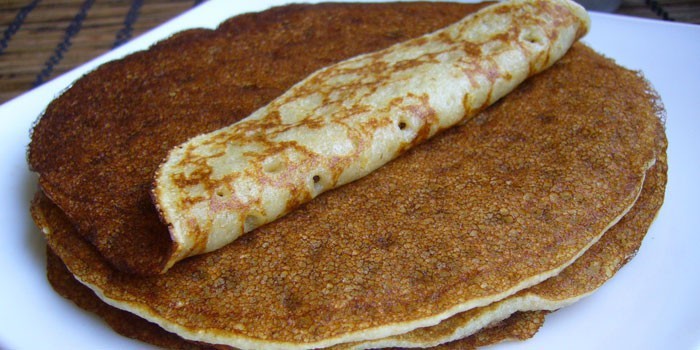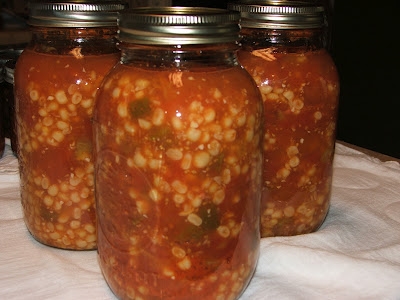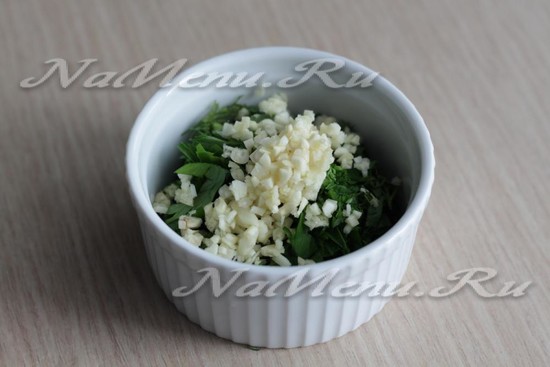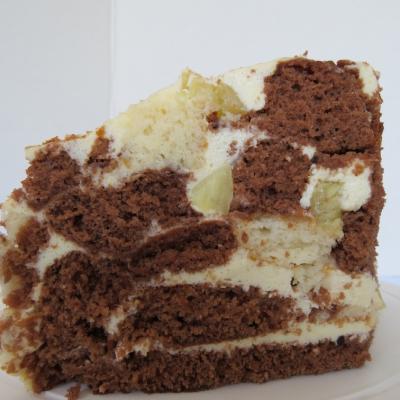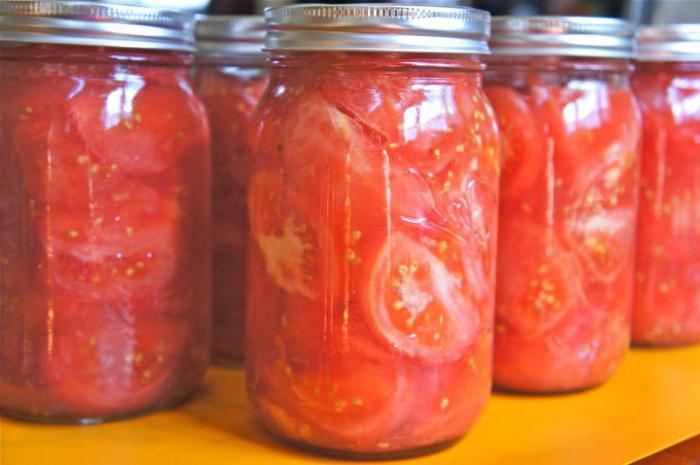Ground red pepper: harm and benefit. Use and how to cook red ground pepper
Hot pepper - a piquant vegetable. It gives brightness to any dish. For fans of hot pepper is an indispensable product. It can be prepared for the winter in various ways: pickle, pickle, preserve as part of other vegetables.
Hot pepper: preparations for the winter. Pickling
In the first recipe, we’ll talk about how to pickle whole peppers. For this you will need: various additives to your taste and desire - peas, horseradish leaves and roots, currant leaves, dill umbrellas, cinnamon, basil, garlic and others. Marinade: per liter of water, 4 tsp. salt and 2 tbsp. l Sahara. Pour a teaspoon of vinegar (9%) into each jar.
Technology
Bitter pepper, pickled for the winter, we start cooking with the preparation of pods. Dry ends need to be cut. Do not open the pod itself. Put the spices in the jars. Scalp the pepper with water and fill the container with the shoulders. Bring water to a boil, put salt, sugar. Pour the peppers, cover with sterilized lids. Wait for the containers to cool slightly and drain the brine. Wait until it boils again and pour liquid into jars. Repeat the procedure again. Then pour in the vinegar, tighten the lids, put the containers to cool.
Hot pepper: preparations for the winter. Salting

In the second recipe, we perform the salting of hot pepper. Need: a kilogram of hot pepper, dill (several large bunches), 40 grams of celery and garlic. Brine: water (1 liter), 80 ml of 6% vinegar, salt (60 grams).
Cooking process
This involves roasting a vegetable. Place the peppers on a baking sheet, place in the oven and hold until tender. Then cool and arrange in sterilized jars. Stack as tightly as possible, adding garlic and dill. Bring water to a boil, add salt and pour vinegar. Cool the brine, pour into banks. Place a load on top and pickle pepper for 3 weeks at room temperature. Then close the lids and refrigerate.
Ground Peppers: Harvesting for the Winter
Preserve chopped pepper according to the following recipe. Composition: one kilogram of pepper, half a glass (100 ml) of apple or wine vinegar, 1 tbsp. l salt.

Rinse and chop the stalks. Pass with seeds and partitions through a meat grinder (on a large grill). Mix the mixture with salt and vinegar. Arrange on sterile jars, cork with lids. The pepper is ready. You can serve with meat or spread on bread. This method is suitable as a basis for the preparation of adjika.
Hot pepper: with tomato
Ingredients: pepper, vegetable oil, tomato juice (homemade), sugar and salt.
Wash the pepper, cut the stalks. Heat the oil and fry the vegetable a little. set on fire for boiling. It should decrease in volume by about half. Then strain it and add sugar and salt. Try it - the spices should be in moderation. Put pepper in jars. Pour juice. Sterilize for 20 minutes, then cork with lids. Store in a basement or cellar. In winter, pepper cooked according to this recipe will be a great snack!
Modern man is trying to use to the maximum all possible resources of nature for his comfortable life. Representatives of the plant world are indispensable components of most drugs that can eliminate the symptoms and causes of various ailments, prevent their occurrence and improve immunity.
In this article we will talk about such an interesting product as red pepper, the benefits and harms of which are already well known. This shrub fruit is currently universally used in cooking, medicine, and also in cosmetology.
Story
This plant was brought to us from Central America, and at the moment it grows everywhere, where a warm and mild climate prevails. The history of this representative of the flora is quite unusual. Over the years of its existence, the plant has spread throughout the world, and has also found use in various areas of human life.
Many years ago, Peruvian Indians used hot red pepper (the benefits and harms of this gift of nature were well known to them) were used in various sacred rituals, and even then this seasoning was a very important and even obligatory component of various spiritual events. In other words, pepper was a divine fruit, a certain symbol that could not be dispensed with, even in the next world.
As for the modern man, without this seasoning it is impossible to imagine any cuisine in the world. We also mention the traditional pepper plasters - they can always be found in the medicine cabinet. In Russia, red hot peppers, the benefits and harms of which have not yet been studied, first appeared in the sixteenth century. Initially, this spice was valued at its weight in gold - only wealthy people could afford it.
At the moment, many countries export pepper: Vietnam, India, Moldova, Ukraine and Uzbekistan, although the highest quality product is imported from Indochina and Southeast Asia. This area is best for drying and processing this seasoning.

Positive traits
Useful properties of this product are difficult to overestimate. It has a beneficial effect on human health, promotes body rejuvenation, weight loss.
Stomach
So, the benefits and harms of which are of interest to many, have a beneficial effect on the gastrointestinal tract. It helps digest food. In other words, if the cook used it in the process of preparing meat dishes, then the food will not only be lighter, it will almost double its calorie content. Based on this information, it can be understood that red hot pepper, the benefits and harms of which are described in this article, does not give rise to concern for avid diets. In doing so, he helps those who follow the figure.
Intestines
The benefits and harms of red pepper affect the functioning of the intestines. Sometimes the uncoordinated work of this body can negatively affect the human body as a whole. The intestine must be constantly functioning, because inside it there is a huge number of harmful pathogenic bacteria that require urgent removal. Eating this seasoning, a person provides full and high-quality work to his intestines. But the spices should be in moderation, otherwise heartburn may occur.
Gynecology
It must be said that red pepper (the benefits and harms for the body of this spice are known to doctors) is an effective hematopoietic and diuretic. Due to it, many women can painlessly and quickly solve gynecological problems. You can establish a regular menstrual cycle by using this seasoning, as well as improve the functioning of the ovaries.

Liver
Red pepper has been used effectively and for a long time, the benefits and harms of which are described in this article, is used in the treatment of various liver diseases, since it contains flavonoids that restore damaged tissue. The liver under its influence produces a greater amount of bile, which enters the small intestine. Capsicum peppers are included in the nightshade family group. These include tomatoes, nightshade, eggplant and potatoes. They are rich in vitamins A and C, in addition, they contain calcium, iron, phosphorus, potassium and trace elements. They have a lot of carotenoids, including beta-carotene.
Immunity and beauty
It should be noted one more wonderful property, which is endowed with red hot pepper. The benefits and harms of the plant extend to cosmetology. This product promotes hair growth, and also improves blood circulation in the area of \u200b\u200bthe nail plate, and this will certainly affect the quality and growth rate of nails. can strengthen immunity, alleviate the condition of a person with asthma, improve well-being with bronchitis and tonsillitis.
The seasoning in question stabilizes and improves metabolism, and this helps with weight loss. The spice also lowers cholesterol, although its excess can negatively affect the mucous membrane, cause heartburn, so you should not eat too much pepper. Red pepper, the benefits and harms of which are described in detail in this article, is unique in its composition. It has many vitamins K, A and C, there is calcium, iron, phosphorus, magnesium, potassium and zinc. In addition, it is rich in sugars, fatty oils, capsorubin, carotenoids. Antioxidants are able to protect cells from various deformations and damage, stop the degenerative processes associated with age. Spice is able to prevent cancer. With asthma and arthritis, it will reduce inflammation.

Negative properties
This article details the benefits and harms of red pepper. It, like any other product, has contraindications for use. Experts do not advise using it for those who suffer from diseases of the intestines and stomach. There is also the likelihood of an allergic reaction to a particular variety of pepper.
In its composition, it is quite aggressive. In order to eliminate the risk of complications, pepper must be consumed in small doses. In addition, for the eyes may be from a product such as red pepper, the benefits and harms. Malysheva, a famous TV presenter, spoke about this in detail in her program. Try to exclude the possibility of spice on the mucous membrane.

Using red pepper
It is used in various fields of human life. In cooking, this seasoning is used to create meat dishes, salads, side dishes and pastries. At food enterprises on an industrial scale, this spice is added to canned meat, sausage, Tabasco and Sambal sauces.
Such a burning ground natural product has a pleasant and light aroma. Spice can have various shades, although in most cases it is saturated red. Mostly, housewives prefer to use such a product in combination, combining with it such tasty and healthy ingredients as garlic, salt, cumin and oregano.
There are an incredible amount of chili peppers, which vary in severity. Cooks store burning powder in the freezer. In this case, this product retains excellent taste and exquisite aroma for a long time. Hot ground pepper externally in the form of special plasters and compresses is used for various diseases of the joints and bones.

As a warming agent, this product is used for rheumatism and arthritis. There is an opportunity in every pharmacy to buy a product with such pepper in the composition. At the moment, such drugs are in high demand and are especially popular among consumers.
Ground pepper
Are you a fan of natural condiments? Cook ground pepper. Doing it yourself will not be so difficult. Dried pods can simply be ground in a coffee grinder. It is best to store this homemade spice in a sealed jar.
Weight loss application
Nutritionists advise using red pepper to reduce weight. The benefits and harms of losing weight will be described below.

Red pepper: the benefits and harms, reviews
Today you can find a huge number of reviews on the use of red hot pepper. Many note that digestion improves after eating it. Women are pleased with the fact that after using tinctures from this spice, hair loss stops. In addition, many people like the taste of food with pepper. But among the negative reviews, one can distinguish the appearance of heartburn, arising from an excess of the considered seasoning in food.
Right prepared pepper is perfectly stored in a city apartment until the next "pepper" season. And if it is dried and ground, it will enrich your food with its wonderful taste and aroma even longer, occupying a rather modest place in one of the kitchen cabinets.
About the benefits of hot pepper
In Mexico and Chile, Thailand and India, no main course can do without hot pepper.
Residents of these countries, located in different parts of the world, are united in one thing - this product is healing.
And they are not mistaken.
Hot pepper helps to digest heavy foods, cleanses the intestines from pathogenic bacteria, strengthens the immune system.
It prevents the occurrence of thrombosis, has a wonderful hematopoietic and diuretic effect, has a beneficial effect on potency, the health of hair and nails.
We collect a fragrant crop
 involves the collection of fruits not fully ripened.
involves the collection of fruits not fully ripened.
Hot peppers for storage, in contrast to sweet, it is better to clean completely ready.
A burning red pepper is stored, which we usually call “chili”, longer than green, it has more vitamin C and carotene.
Exactly in ripe pods there is a high concentration of unique substances, which are also an easy preservative.
Only completely healthy peppers are well stored.
To "bring them to clean water", after harvesting, lay the pods in a shady cool place with one layer and leave for a week. After that, inspect and discard any corrupted instances.
Seasoning Drying Methods
 The best way to keep hot peppers for the winter is to dry the fruits.
The best way to keep hot peppers for the winter is to dry the fruits.
The simplest “grandmother” method of drying chilli is similar to drying clothes.
In a dry, ventilated bright room, a clothesline is pulled.
Each pepper is pierced in the area of \u200b\u200bthe stalk with a needle with a threaded thread and using the same thread is attached to the rope.
Fruits should not touch each other.
Good dried peppers stacked in canvas bags or glass jars, covering them with parchment paper, and stored in a dry room.
Peppers that are not completely dried, but have already hardened and begin to “curl”, can be removed from the rope, strung with a “necklace” on a dense thread and hung up, decorating the interior of the kitchen. They will dry out and create a pleasant atmosphere, also disinfecting the room.
The simplest way: put parchment paper on the windowsill and place the washed peppers on it in one layer. Within 3 weeks, the pepper will dry, provided that you periodically turn it over. To speed up the process, each fruit can be cut in half.
Dried peppers in a gas and electric oven. Before this procedure, the pods are thoroughly washed, dried with a paper towel. Fruits can be dried whole, cut in half or finer. The baking sheet is covered with parchment paper, the pods are laid out in one layer and sent to the oven (+ 50-60 ° C). The door should be slightly ajar so that the pods are not baked, namely dried.
After a couple of hours, turn off the oven, but do not close the door. After a day, set the same temperature and continue heat treatment for another 2 hours. Cool right in the oven, turn it off, and before storing hot peppers, put them in bags or glass jars.
It is very convenient to dry the pepper in an electric dryer. Usually the process takes about 12 hours, but it depends on whether the fruits are whole or fragmented. It is worth looking into the instructions for your unit. The fruits in the electric dryer are dried evenly, perfectly retaining their useful and palatability.
Freeze correctly
 Another great way to store hot peppers at home is to put the crop in the freezer.
Another great way to store hot peppers at home is to put the crop in the freezer.
So it will retain its value as much as possible.
A nice addition - it does not even change the attractive color.
Rinse the whole pods in cold water and pat dry with a towel.
If you need to reduce its hotness, immerse it in boiling water for 2 minutes, but keep in mind that some vitamins “do not like” such heat treatment.
Chili peppers are frozen whole or chopped (cubes, straws).
Put whole pods convenient for storage and further use in portions in bags, remove air from them as much as possible, “seal” (tie, fasten with a paper clip) and send to the freezer.
Lay the crushed fruits on a pallet in one layer and freeze (instant freezing). Then transfer to plastic bags and store in the freezer.
Frozen peppers can be stored in the freezer for 6-12 months.
Pepper in the jar
 Canned hot pepper is a wonderful treat and a convenient way to store the crop, especially if it is placed in beautiful mini jars that do not take up much space.
Canned hot pepper is a wonderful treat and a convenient way to store the crop, especially if it is placed in beautiful mini jars that do not take up much space.
Tanks in which red and green pods are side by side are a real decor for the kitchen.
Whole or sliced \u200b\u200b(with removed testis) fruits canned in the marinade (base: vinegar or lemon juice), salted or simply poured with vegetable oil.
In pickled peppers, it is customary to add horseradish, currant or cherry leaves, spices to taste (cloves, basil, garlic). The amount of acid in the marinade depends only on your taste, a very small volume is enough for storage itself (for a liter jar - 1 tsp).
Salted bitter pepper will get an excellent taste if garlic, dill and celery are chosen as partners in it. 50-60 g of salt is enough for 1 liter of water. At room temperature, the snack will be ready in 3 weeks. Before storing hot peppers in jars, it is advisable to rearrange them in a cooler place.
A delicious preparation is chili in vegetable oil, especially olive oil. But a lot of oil is needed. Pepper must be completely poured and put in a dark place. No spices are added, salt is up to you.
Can hot peppers be kept fresh?
 The simplest way to keep hot pepper fresh for the winter is to place it in a dry room where the temperature is kept within 0 ... + 2 ° С.
The simplest way to keep hot pepper fresh for the winter is to place it in a dry room where the temperature is kept within 0 ... + 2 ° С.
Place healthy, ripe pods in boxes or in plastic bags.
So they can be stored for about 40 days.
In the cellar, basement, on the insulated balcony at 0 ... + 2 ° C, the peppers can last almost 2 times longer if you carefully dig them out of the ground and hang them from the roots to horizontal beams.
By the way, there are good indoor varieties of hot peppers - 1-2 bushes will not only provide you with excellent fresh fruits, but also decorate the windowsill.
- Chile, although of transatlantic origin, is characterized by a livable nature, it grows wonderfully and bears fruit both in the garden and at home all year round.
- When handling hot peppers, wear latex gloves to avoid skin irritations.
- Given the taste preferences (yours and those around you), when cutting the pods, remove or leave the seed (the most burning) part, thus “regulating” the sharpness of the fruit.
Useful video
An unusual and very way of harvesting hot pepper for the winter, which I will definitely try as soon as the crop ripens in the garden, is to pour it with simple vinegar:
Spicy Vegetable Can to prepare for the winter different ways. Read more about, as well as the possibility of it on our website.
But the most popular is the drying of hot peppers. How to dry bitter peppers? You can do this in different ways: in the oven, in the electric dryer, in bulk on newsprint or simply hanging it on a thread in a cool room.
In our articles we have already talked about how, and also about him. These methods vary greatly with the drying of hot pepper.
Vegetable preparation
How to dry chili peppers at home? For the preparation of chili peppers for the winter it is necessary pre-prepare. To do this, pepper is sorted, selecting pods of uniform color (green, red). It is worth paying attention to the presence of spots on the surface of the vegetable or any damage.
If the pepper contains even the smallest dots, especially if they have an orange tint, then such a pod must be removed from the total mass - it is spoiled and does not lie down for further long-term storage.
Selected peppers are thoroughly washed under running water and dried on a paper or cotton towel. Pure pepper is best placed for 1-2 days in a warm room for easy drying.
If pepper is decided dry whole, then at this stage the preparation process ends, but if there is a desire to dry the chopped pepper, then you need to cut the fruit across, remove seeds and stalk.
Caution! In the process of preparing and drying hot pepper, some safety regulations:
- work must be done strictly in gloves(surgical latex can be used, having previously washed the upper layer of gloves with ordinary soap);
- try hard do not touch faces with hands until the end of work;
- when slicing hot pepper, it is important to ensure that small pieces or sprays of pepper juice do not fall in the eyes;
- upon completion of work with the product must be carefully wash the hands plenty of water.
Watch the video on how to string hot pepper on a thread for drying:
Ways
How to dry hot pepper?
Air drying
How to dry hot peppers at home in the air? This drying method is most popular. Using the natural method, you can dry whole or chopped capsicum. In the first case, the pods are strung on a thick thread with a needle.
 To do this, make a hole just below the stem.
To do this, make a hole just below the stem.
For air drying chopped pepper use newsprint or small sieves. Having scattered the cut on the surface of the paper, it is left for 8-10 days until completely dry, periodically shaking and mixing for uniform exposure.
It is advisable to change the layer of the newspaper once every 2 days, as the paper absorbs moisture. This way you can achieve speedy and better drying.
Interesting: in winter You can dry hot pepper by hanging the pods over the battery, or by placing a newspaper with a cut on the windowsill (also above the battery).
How to dry red hot peppers? You will learn how to prepare peppers for drying in the air by watching the video:
Oven drying
How to dry hot peppers in the oven for the winter? Unlike air drying, the preparation of hot pepper with the help of an oven is often resorted to if the product is subsequently ground to powder.
For this drying method, finely chopped vegetable is laid out on a baking sheet and placed in the oven, preheated up to 55C ° ... 60C ° for 3-5 hours.
As with the natural process, slicing is necessary from time to time. mix.
Important: during drying, the oven door must be ajarotherwise the pepper will not be dried, but baked.
Drying in an electric dryer
How to dry red hot peppers at home in a dryer? Many housewives prefer to dry vegetables and fruits in electric dryers. Similar device can be applied and for red pepper. Prepared pods are laid out on lattices in a single layer, the equipment is turned on at full capacity and dried for 10-12 hours until completely dry.
In order for the fruits not to stick to the trellises, the process is necessary controlsometimes turning over the pods.
In an electric dryer, you can also harvest chopped chili. This reduces the drying time. up to 4-6 hours.
How to dry hot peppers for the winter in an electric dryer - photo:

Readiness
How to determine readiness? Ready-made pods of hot pepper are very shriveled and have more intense coloringthan fresh. Readiness for future seasoning is also determined fragilitypepper - dried vegetable crumbles easily in the hands.
How to dry hot peppers at home? Tips for drying and storing hot peppers at home in this video:
Sushi Storage
After drying, capsicum is usually ground into powder. in a coffee grinder, which is then scattered in glass jars, tightly corked and stored in cool dark place. Experienced housewives assure that the aroma and piquancy of seasoning can be extended by placing containers with powder in the freezer.
 Dried Chili Peppers in glass containerscovered with several layers of gauze.
Dried Chili Peppers in glass containerscovered with several layers of gauze.
Corking jars with pods is not worth it, as they need a constant flow of air. Shelf life of the finished product - 12 months.
Having prepared dried chilli you can always have on hand spicy seasoning for dishes, and knitwear with red or green pods will become an original decoration for the kitchen.
You can learn about how to grind hot pepper for storage from the video:
Bitter peppers are well known to housewives. Added a little more than necessary, and the food becomes impossibly spicy. However, such pepper has a lot of fans, because dishes with burning seasoning are not only fragrant and tasty, but also have medicinal properties. Therefore, more and more people are interested - in what ways can I prepare hot peppers to diversify home cooking in winter?
The first Indians began to grow capsicum, and in the countries of Europe and Asia, he came relatively recently - in the XVI-XVII centuries. But these days it is even difficult to imagine Indian, Korean or Chinese dishes without a characteristic burning taste. The unique properties of hot peppers are gradually gaining more and more fans around the world. Why is this happening?
- Hot peppers contain many vitamins useful for the body - C, group B and carotenoids. Interestingly, there is half as much vitamin C in lemon as in raw pods of hot pepper. In addition, pepper has fatty oils and sugars.
- The severity of pepper directly depends on the capsaicin alkaloid included in its composition, and this substance is able to relieve pain and reduce inflammation.
- Thanks to bitter pepper, endorphins are produced in the body - hormones of happiness, joy and pleasure. They reduce stress and help cope with insomnia.
- For many years it was believed that eating spicy is harmful. Recent research by scientists suggests the exact opposite. Hot pepper improves appetite and, if consumed in small quantities, qualitatively normalizes digestion.
- Eating hot peppers is especially useful in old age. It improves metabolism and blood circulation, normalizes blood pressure, and also prevents the development of atherosclerosis and reduces the risk of blood clots.

Types of hot pepper and safety in its processing
There are only four cultural types of hot pepper: Peruvian, Mexican, Colombian and pubescent. For many years, crossing them, people have grown a great many varieties that are distinguished by their spiciness, taste, size, shape of the pods and their color. Some peppers taste almost spicy, and some varieties seem to be burned with fire.
The main thing is that all peppers are similar - they have a sharp, burning, slightly bitter taste. Therefore, in cooking they try to use them in small quantities, as a seasoning for salads, first and second courses, and less often - for pastries and drinks.
When processing hot pepper, care should be taken. Burning substances getting on the mucous membranes or micro-wounds on the hands can cause pain and a strong burning sensation. Therefore, when harvesting pepper, the room should be well ventilated. It is advisable to wear gloves on your hands. In addition, you need to try not to touch the face with your hands, and even more so - the eye. If pepper does get into your eyes, rinse them with plenty of water.

Methods of drying hot pepper
It is very convenient to store hot pepper in dried form, and there are several ways to dry it. In this case, you can dry both whole pods and halves of peppers with seeds already removed.
The easiest way is to hang pods on ropes or strong, heavy threads. You just need to choose a well-ventilated room, a country terrace, a canopy, an attic or a loggia, where it is dry and warm. It is also advisable that the direct rays of the sun do not fall on the pepper. It is convenient to string pods through the stalks. It is necessary to ensure that they do not touch each other, and air can blow them from all sides.
It is also convenient to spread the peppers on trays covered with paper, small grills and large dishes anywhere, for example, on a wide windowsill. The main thing is not to forget from time to time to stir up pepper “raw materials”.
To speed up the drying process, the pods are placed in a stove oven or electric dryer. With this method, it is important to choose the optimal drying mode so that the pepper is dried, and not baked. In the oven, it is good to set the temperature + 50 ° C and slightly open the door. In an electric dryer, peppers of the right condition can be obtained in about 12 hours.
Store the dried pods whole or ground. To grind them, they usually use a food processor, a coffee grinder or a mortar with a pestle. Dried peppers do not like moisture, so you need to store it in a hermetically sealed container: glass jars, wooden boxes, birch bark baskets or paper bags. Many leave a rope with pods in a conspicuous place - to decorate the kitchen.

Pickling
There is a saying among the inhabitants of the Caucasus: "Nothing warms you on cold days like a good spicy snack." Pickling peppers is not difficult. For 1 kg of capsicum you will need: a large bunch of dill, cilantro and mint, 3 heads of garlic and 300 ml of grape vinegar. The best option for pickling is vinegar, which is made from white grape varieties. In addition, when marinating, peas of black and allspice, bay leaf, cloves, coriander, salt and sugar are used.
Very ripe peppers are very good in taste. Ideally - plucked right from the bush just before pickling. From the greens only leaves are used, sprigs for pickling are not needed. You do not need to cut greens. Garlic just needs to be broken into slices without peeling it. Then, in combination with pepper, it will serve as an excellent savory appetizer.

The pods are washed and pierced at the stalk with a toothpick or knife so that there is no air inside the peppers. The next task is to soften the pods slightly. To do this, they are placed in a pan with water, pour boiling water there and kept for 3-4 minutes under a closed lid. Then the water is drained. This must be done at least three times. This method will allow peppers to become softer, but not lose their shape. The same result can be achieved if the pods are blanched in boiling water for 2-3 minutes, and then turn off the fire and leave them in the pan under the lid for another quarter hour.
Marinating jars are sterilized in advance. For 1 kg of peppers you will need 3 cans of 0.8 l or 5 - of 0.5 l.

After all the preparation, you can begin to prepare the marinade. 6 tsp are put in 1.5 l of water. granulated sugar, add water to taste, add all the leaves from the greens, garlic cloves, 6-8 bay leaves, 15 black peas and 5-6 allspice peas, 1 tbsp. l coriander seeds and 4-6 cloves. Marinade is boiled and poured into it grape vinegar. Then the marinade should boil a couple more minutes.
Green leaves with garlic spread on the bottom of glass jars. Peppers are placed on top of them and the contents are poured with hot marinade with spices to the very top. After that, the banks are corked. You can store them at room temperature.
In the video, Olga Papsueva talks about the secrets of pickling hot pepper at home.
Pickling
Salting is an excellent way of harvesting for the winter, because it allows you to save a maximum of useful vitamins and minerals in vegetables. Hot peppers can be salted in different ways.
If the house has the ability to store food in a cool room, for example, in a cellar, pods of hot pepper can be salted without being rolled up in jars. Pepper is pre-baked in the oven to make it soft, and allowed to cool. Then the pods are placed in pre-sterilized dry jars, placing peeled cloves of garlic, dill branches, horseradish leaves and black currant between layers of pepper.
To prepare the brine, 60 g of salt (not iodized!) And 80 kg of vinegar are diluted in 1 liter of water. The water is boiled, allowed to cool and poured into jars of pepper. Under oppression, the pickle is left at room temperature for three weeks, and then taken out in the cold.

If there is no cellar or a cool veranda in the house, the jars are filled with hot brine, a little vinegar is added and sterilized: 0.5 l for 20-25 minutes, and 1 l for 35-45 minutes. After that, the banks are closed with lids. You can store them at room temperature.
In the video, Maxim Punchenko shows how to cook tsitsak - hot savory pepper in Armenian.
Pepper paste
Hot pepper pastes are used in the cuisines of almost all Asian countries and many countries of the Mediterranean. They are added to ready-made dishes, as well as when cooking soups and while stewing meat and fish. For aromatic hot pasta you need only five ingredients: 100 g of hot pepper, 1 kg of bell pepper, 5 heads of fresh garlic, 2 tbsp. l salt and 5 tbsp. l vegetable oil. To give different taste shades during the preparation of pasta, you can add cilantro, celery or mint.
Both types of peppers are washed and cleaned from seeds. Garlic is also peeled. Then peppers and garlic are crushed in a blender or food processor to a homogeneous mass. The resulting puree is spread in cheesecloth and suspended so that the juice flows. It does not need to be poured out! Pepper juice can be frozen in small portioned containers, such as ice cubes, and used in the winter months as a seasoning.
Transfer the mashed potatoes onto a baking sheet, add salt and oil to it and mix thoroughly. In the oven, heated to + 150 ° C, pepper paste is cooked for about an hour. Store it in small plastic containers in the freezer. Open paste is recommended to be stored in the refrigerator and used for 10 days.

Preservation of hot pepper without salt
Hot peppers on their own are an excellent antimicrobial. That is why it is consumed in large quantities in southern countries. Due to the antimicrobial properties, pepper blanks can be made with unusual preservatives.
To preserve hot pepper without salt and vinegar, first you need to wash, dry and pierce with a toothpick. Then sterile jars are filled with whole pods and cold pressed extra virgin olive oil is poured. If desired, a little spicy herbs can be added to the pepper. Banks are closed with lids and stored in a dark place. In this type of preservation, olive oil will acquire a bright pepper aroma and become sharp in taste. Therefore, it can be used in winter as a salad dressing.
In another way, hot peppers canned with natural apple cider vinegar. Preparation of pods and cans is the same as for oil preservation, only pepper is poured not with oil, but with vinegar. As in the first case, to it, if desired, you can add spicy herbs - mint, rosemary or oregano, as well as honey - 2 tbsp. l 1 l jar. Pepper will be ready for use in a month. A fragrant and spicy vinegar, like oil, is perfect for dressing fresh salads.


